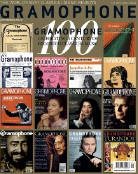Texte paru dans: / Appeared in: |
|
|
Outil de traduction |
|
|
Bach drafted an annotated genealogy of his extensive musical family in about 1735 and he had a collection of mostly sacred music composed by several of the older generations of Bachs – an assortment now known as the Altbachisches Archiv (the title of Max Schneider’s edition published by Breitkopf & Härtel in 1935). Seven motets by six different Bachs are performed by the Tölzer Knabenchor, including five from the Altbachisches Archiv. Fielding up to 34 boys and 19 men, during each motet Michael Hofstetter alternates the large choir with reduced and solo forces. Theorbo, archlute, violone and two organs (one also on harpsichord) are deployed to create shifting instrumental colours – and different combinations or an organ provide semiimprovised preludes to each of the motets. Hofstetter adopts a patient tempo and a broad range of dynamics in Unser Leben ist ein Schatten by the Erfurt organist Johann (1604-73); the striking final cadences of Johann’s Sei nun wieder zufrieden, meine Seele illustrate perfectly the Tölz choir’s brightly focused singing. Johann Christoph (16421703), the Eisenach court harpsichordist and organist, is represented by a poignant Nunc dimittis (Herr, nun lässest du deinen Diener). The economical treatment of the chorale ‘Jesu, meine Freude’ (with echo effects) in Halt, was du hast invites an inevitable comparison between Johann Michael (1648-94) and his son-in-law Johann Sebastian. After Unsere Trübsal die zeitlich und leicht ist by the Meiningen court Kapellmeister Johann Ludwig (1677-1731), the choir signs off with a virtuoso flourish in Johann Sebastian’s Lobet den Herrn alle Heiden. Textures and texts are admittedly static and a touch heavy in comparison to the chiaroscuro and flexibility of slimmerscale interpretations, but the sincerity and technical finesse of the Tölzers are admirable.
The vocal sextet Ensemble Polyharmonique cultivate a synthesis of refined shading and eloquent freedom in 15 motets (eight from the Altbachisches Archiv) that span four generations. The singers are supported by Teatro del Mondo’s uncomplicated continuo trio of lute, violone and organ (played by director Andreas Küppers). A six-part Kyrie by Heinrich (1615-92) is performed beautifully by solo voices and a discreet organ. Ensemble Polyharmonique’s voices lean emotively into intense suspensions and cathartic resolutions during Johann Christoph’s Der Gerechte, ob er gleich (likely for a funeral in the mid-1670s), and his strophic Es ist nun aus mit meinem Leben offers elegiac simplicity. The passing dissonances in Johann Ludwig’s Unsere Trübsal are caressed lovingly (it is the only piece to feature on both albums). Adam Drese’s Nun ist alles überwunden (Arnstadt, 1686) somehow ended up in the Altbachisches Archiv and is sung tenderly by four unaccompanied voices. The musicians allow themselves a freer rein in Johann Michael’s animated New Year’s Day motet Sei lieber Tag willkommen (albeit with momentary shrillness from the sopranos). Looking to the later 18th century, Carl Philipp Emanuel’s Bitten is performed beguilingly by a quartet of singers, archlute and violone. Aus der Tieffen rufe ich, Herr, zu dir by Johann Ernst (1722-77) is written in the new galant style, albeit with a few traces of his godfather and teacher Johann Sebastian. Concluding with Bach’s early Weimar version of a five-voice Kyrie (BWV233a, later reworked in the Mass in F major), the crystalline musicianship and imaginative programming deliver rewarding insights for even the most intrepid explorers of the Bach dynasty. |
|





